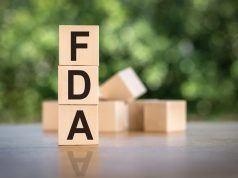On Nov. 5, the government of the U.S. state of Pennsylvania hosted a series of virtual seminars addressing the health risks of vaping in the format of a summit.
The Departments of Health and Drug and Alcohol Programs collaborated under the leadership of state Secretary of Health Rachel Levine. Levine serves under Democratic Gov. Tom Wolf.
“Thousands across Pennsylvania fall victim to the strategically marketed tobacco and vaping products and are unaware of the significant health impacts such as nicotine addiction and lung associated injuries,” Levine, who is a board-certified medical doctor, said. “I am proud to see experts, advocacy groups, and local authorities come together to discuss challenges and find opportunities to address the vaping epidemic.”
According to a review of the event published by the state government, the vaping summit featured several experts in many fields to offer information and updates on the advocacy, health, and policy work done to curtail the vaping epidemic in the state.
Speakers from the American Lung Association, the University of Pennsylvania, the University of Pittsburgh, and the City of Philadelphia’s public health department.
As far as we can tell, no harm reduction presentations were presented. While the event was certainly worthwhile, there’s concern among smoke-free product and tobacco harm reduction advocates that the presentations were single-minded and failed to discuss the potential for alternatives and other consumer-facing harm minimization strategies.
We at Vaping Post also wish to highlight that this event was supported with funds provided by the state, and the American Lung Association, the Pennsylvania Alliance to Control Tobacco, and the state-level NGO, TRU (a.k.a, Tobacco Resistance Unit).
The Consumer Choice Center, a center-right policy think tank, published a whitepaper that indexed the status of vaping in all 50 states in the United States. To rank each state, the center created a weighted scoring system that considers regulations like flavor restrictions, nicotine and tobacco taxes, and the ability to sell vapor products online.
Regulations are additionally assessed based on how stringent they are, including rules and policies that are already promulgated by the Food and Drug Administration and other federal and state public health agencies. According to the state’s point system, 0 to 10 points received gives a state an “F” grade. 11 to 20 points is a “C” grade. States with scores between 21 and 30 have received an “A” grade.








